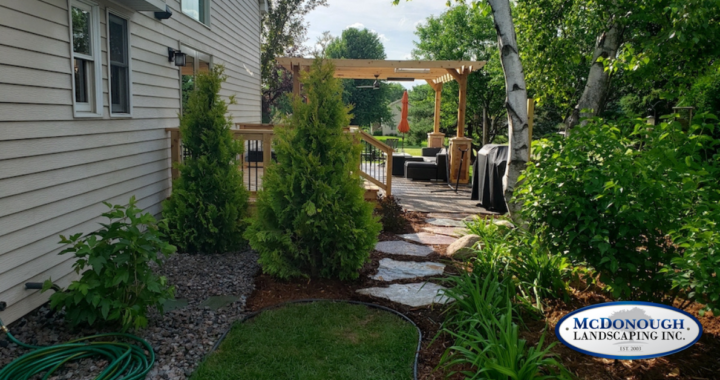Plants are a crucial part of a healthy environment, especially in urban and suburban communities — they absorb carbon dioxide and release oxygen, provide shade to cool our neighborhoods, prevent erosion, and filter ground water. But sustainable landscaping makes the trees, shrubs, and flowers we plant even more valuable to our surrounding environment.
Why Is a Sustainable Landscape Important?
Maintaining our lawns and gardens sustainably preserves limited resources, reduces waste, reduces our use of pest-controlling chemicals, and helps keep pollutants out of our air, soil, and water.
In addition to benefiting the environment, sustainable landscaping can also save you money. While sustainable practices can sometimes have higher up-front costs, they will often result in long-term cost savings in the form of less maintenance, lower water and electrical bills, and reduced replacement costs for both plants and hardscape materials.
Sustainable landscaping at home isn’t difficult, and you don’t have to do it perfectly to have an impact on the environment. Begin by incorporating a few new sustainable habits, and add more as you are able.
10 Tips for More Sustainable Landscaping
Sustainable landscaping concepts are simple, and some may already be familiar to you. Here are 10 ways you can create a more sustainable landscape in your yard.
1. Compost
One of the best things you can do for your gardens is to set up a home compost station. A healthy garden starts with healthy soil, and compost provides food for soil organisms and vital organic materials for soil texture. If you’re concerned about the unappealing look of a compost pile, using a store-bought compost bin will keep your pile contained so it doesn’t get out of hand.
In addition to starting a compost pile, try leaving grass clippings on the lawn when you mow — this is known as grasscycling. As the clippings decay, they release necessary nutrients into your lawn. Grasscycling can reduce your need for lawn fertilizer by as much as ¼ to ⅓.
2. Conserve Water
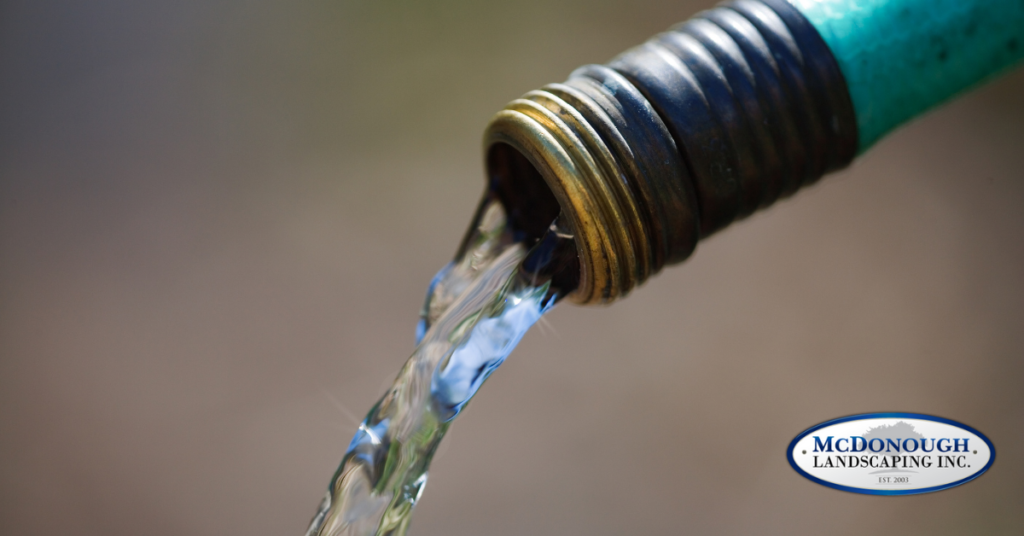
There are a number of ways to conserve water in your landscaping, including the following:
- Water early in the day. When you water your lawn and gardens, stick to the early hours of the morning to help reduce evaporation.
- Install a drip irrigation system, preferably one with a timer. An irrigation system will save as much as fifty percent more water than traditional sprinklers! Inspect your system regularly for leaks, and adjust the timer to suit each season’s rainfall and the needs of your plants. Upgrading to a smart control system will conserve even more water by watering your plants when they need it, rather than on scheduled days or times of day.
- Harvest rainwater. Harvesting your rainwater contributes to the conservation of water in a small but effective way. Collect runoff in a rain barrel connected to your home’s downspouts, then use it to water flower beds and potted plants.
- Plant a rain garden. Rain gardens work to channel stormwater into a sunken, planted garden area full of plants that thrive in moist soil. These gardens typically use gravel and soil to filter runoff, removing harmful pollutants that would otherwise end up in the groundwater or nearby streams.
In addition, choosing plants with water conservation in mind can help reduce your use of water as well as the time you spend watering.
3. Replace Problem Plants
If you have plants that require inordinate amounts of water, pest control, or labor to stay healthy, consider replacing them with hardier varieties. Not only is this better for the environment, it will save you the time, energy, and money you spend maintaining those more sensitive plants.
4. Choose Native Plants
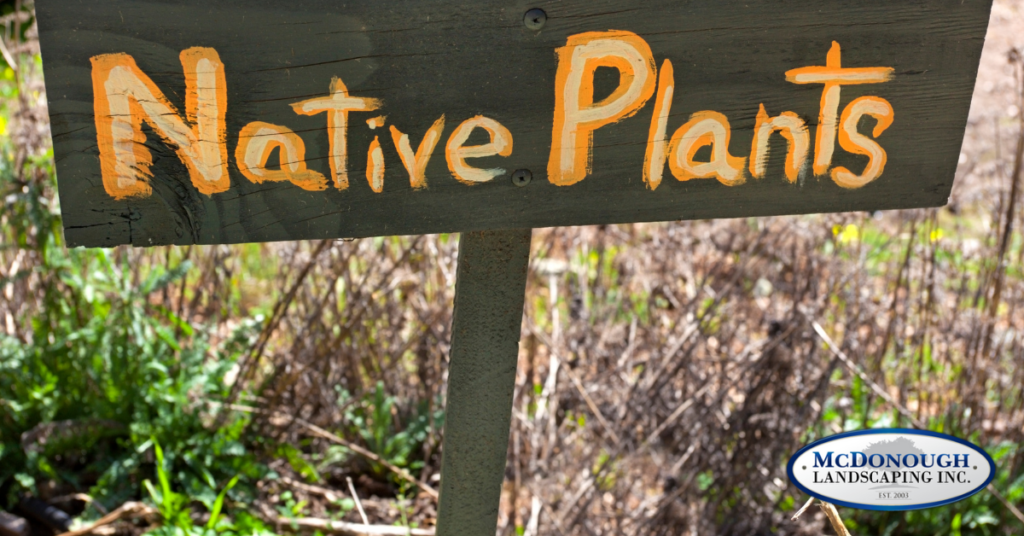
Using plants native to your region connects your home’s landscape to the larger ecosystem, supports local wildlife, and decreases your need for supplemental water and fertilizer. Native plants are more suited to your environment, so they require less maintenance to keep them healthy.
To get ideas for which native plants work well together both aesthetically and ecologically, you can read native gardening guides, talk with a native plant expert in your area, or visit a local plant preserve or arboretum for inspiration.
5. Choose the Right Plants For Your Zone
Similarly, make sure to choose plants that are suited to your hardiness zone. These zones differ not only by state, but by county. Plants grow based on weather, soil conditions, rainfall, sun, and temperature, and your hardiness zone will indicate which plants will do well in your area.
Choosing plants that are low-maintenance and tolerant of your local weather conditions will encourage a healthy ecosystem and provide the best aesthetic beauty for your gardens.
6. Include Pollinator-Friendly Plants
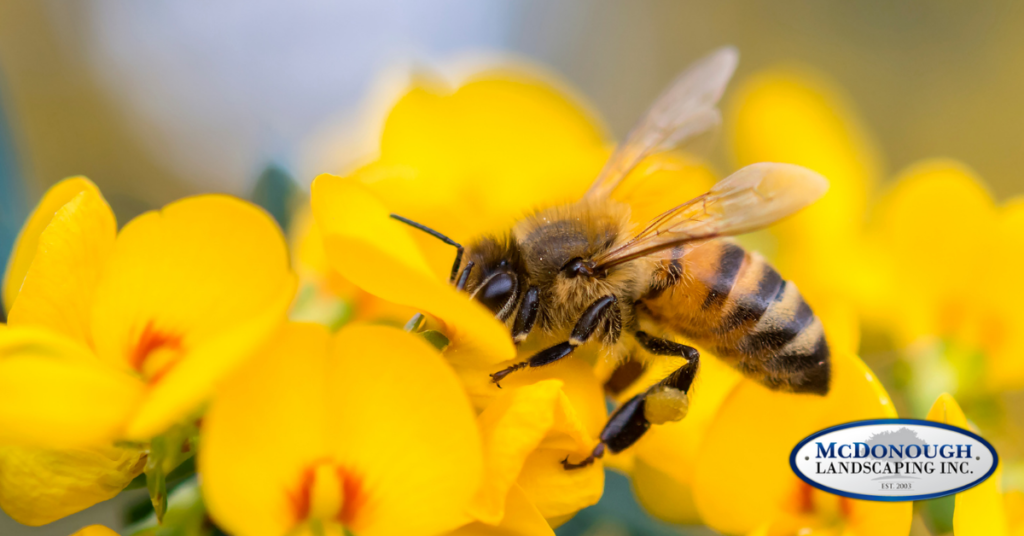
Pollinators and birds enjoy habitats where trees, grasses, and shrubs combine to create areas rich in food and shelter. Include plants in your landscaping that are friendly to birds, bees, and butterflies, such as vegetables, herbs, and flowering bushes. Flowering trees and clover are good pollinator-friendly options as well.
Plant clumps or bands of the same type of bloom together to make them easier for bees to see from a distance. No room in your garden? Try adding some potted pollinator-friendly plants to your deck or porch.
7. Use Fertilizer and Pest Control Products Carefully
In addition to planting pollinator-friendly plants, avoid chemically treating plants and flowers whenever possible. Chemical pesticides not only affect the damaging insects you are targeting, but beneficial insects as well, such as bees and butterflies. In many cases, beneficial insects will do the job of removing damaging insects for you (for instance, ladybugs and lacewings will eat aphids).
Be careful with your use of fertilizer as well. This is an instance where more isn’t necessarily better. To help avoid overuse, follow labels carefully. Understanding the products you use will help to ensure you use the right amount of the right products at the right time of year.
In a similar vein, to discourage weed growth without using chemical herbicides, spread mulch around trees and plants (bonus: this will also minimize water runoff and retain moisture).
8. Include a Water Feature
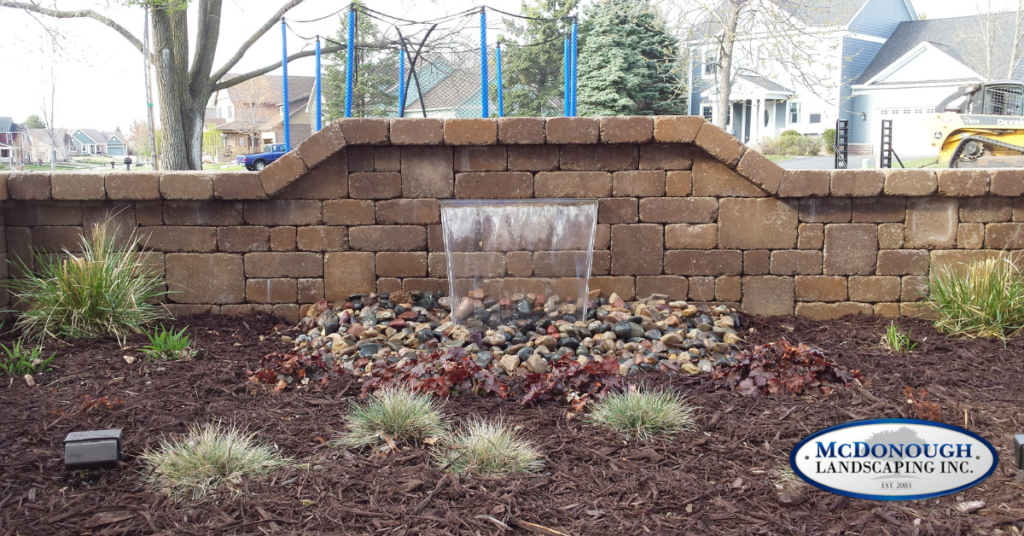
Part of sustainable landscaping is creating an environment that is healthy for local wildlife. Include a fountain, bird bath, pond, or other water feature to attract wildlife for bathing and drinking. This is especially important in urban and suburban areas where many of the natural water sources they would typically use have been eliminated.
To help make your water feature more sustainable, try routing one of your rain gutters to drain into it. Or, try adding a catch basin to your rain gutters or redirecting rainwater to a storage tank (such as a rain barrel). Then use that water to fill your fountain.
9. Use LED or Solar Powered Lighting
Consider using LED or solar powered fixtures in your landscape lighting. Both are extremely efficient — LED bulbs consume up to ninety percent less power than incandescent bulbs, and solar powered fixtures save even more energy. This is better for the environment and easier on your electric bills.
10. Use Long-Lasting Hardscape Materials
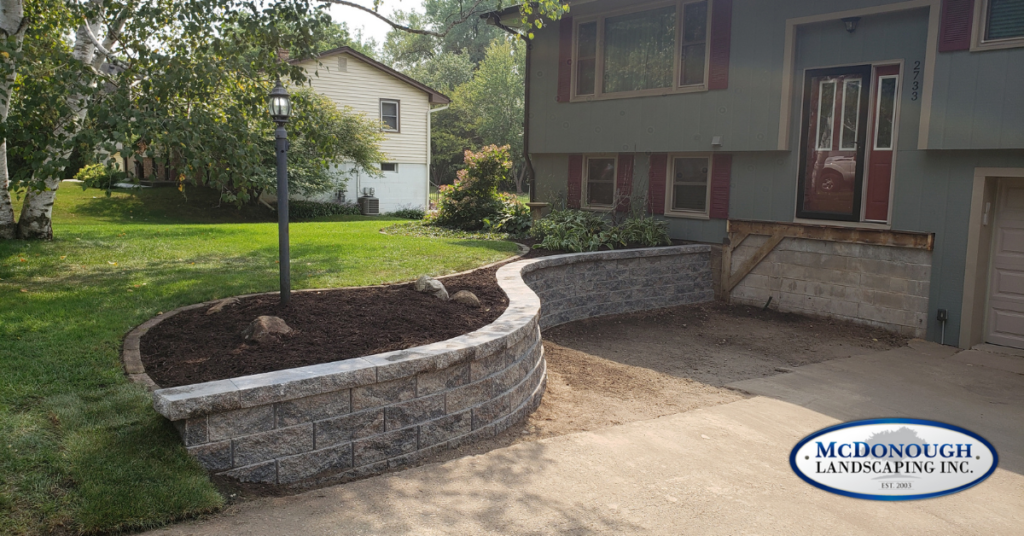
Ideal hardscape materials should be long lasting and low maintenance (composite wood, for example). Reused or recycled industrial materials are good options as well. For instance, corten steel, railroad ties, and recycled concrete objects can serve as retaining walls or curbs.
Use locally-sourced materials whenever possible. Locally-sourced materials travel shorter distances, meaning a lower carbon footprint and potentially lower cost. Local stone is an example of a material that is both locally sourced and long lasting.
Bonus Tip: Don’t Forget to Enjoy Your Landscaping!
No matter which of these sustainability tips you choose to implement into your landscaping plans, don’t forget to make your home’s landscape a functional part of your life. When designing your outdoor space, first consider how you want to use the space on a day-to-day basis, then create your design around those uses. You want to make sure you can go out and experience your yard, rather than just enjoying the view through your windows.
